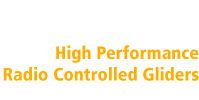
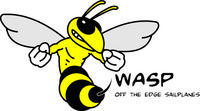
Off the edge sailplanes
Wasp
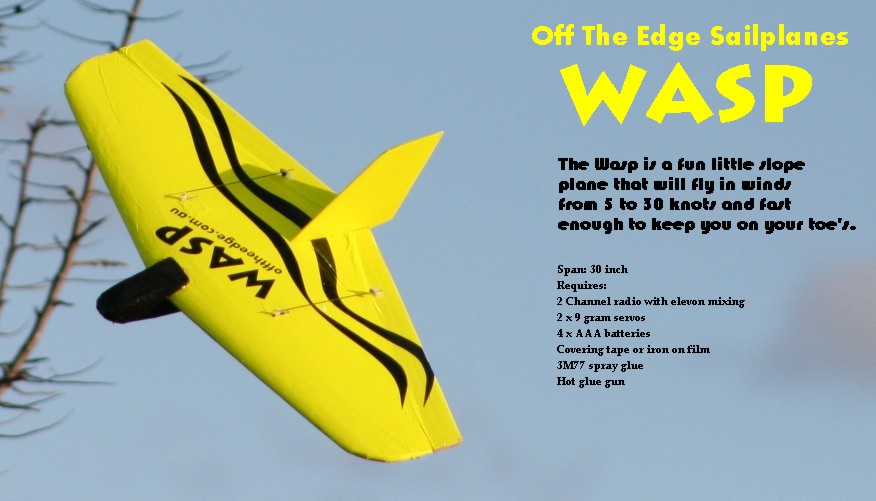
The Wasp is a compact, light weight slope glider designed for light to medium lift & tight flying spaces.
offtheedge.com.au
KIT CONTENTS
1. SET COMPUTER CUT EPP FOAM CORES (1.9ft/cu foot)
2. 78mm x 3mm x 1mm CARBON SPARS
2. 22mm x 3mm x 1mm CARBON SPARS
1. COMPUTER CUT NOSE POD
1. SET 3MM BALSA ELEVONS
2. X MICRO CONTROL HORNS & Ezy links
1. BALSA TAIL
REQUIRED ITEMS (Not included in kit)
Radio Gear Accessories Needed
· Radio with elevon mixing & throw adjustment of 20% on the elevator
· 2 x Sub-micro servos (Less than 9 grams each)
· 1 x Sub- micro receiver with end mount plugs (should be no larger than 40x20x12)
· 4 x 1/3 AAA rechargeable batteries set in pairs, it is not necessary to use a switch just
plug it into the receiver
·
Building Supplies
· 3m-77 contact spray
· Thin CA (cyanoacrylate) glue
· Hot melt glue gun
· Sharp hobby knife, razor blades, & scissors
· 50mm packing tape (Clear or coloured) or low temperature iron on film covering
· Ruler
· Flexible plastic squeegee or stiff card for applying tape
· Sanding block & paper in 100 & 150 grit
· Paint or coloured markers to decorate the wing
Building Instructions
Fitting carbon spars
1. Remove wings from beds. Glue the two wing half together with 3M77 and let dry in there wing beds. Make a mark with a pen 20mm from the trailing edge at the tip ends of each wing. Take one of the long carbon spars, holding the spar at the marks at each end, push the spars in until the ends of the spars are flush with the edge of the wing, the spar should bow toward to the front of the wing, with a pen mark the path of the spar. Use a sharp knife to cut a 3mm deep slot along the mark. Fit the spar in the slot making sure it is flush with the surface of the wing. Now check along the leading & trailing edges to make sure that they are straight & don’t have any warping, you can bend the wing cores to get them straight, the spar can now be glued into position with CA glue by running a liberal amount of glue down the spar. This process can be repeated on the other side, so you will have a 3mm x 1mm long spar on each side of the wing.
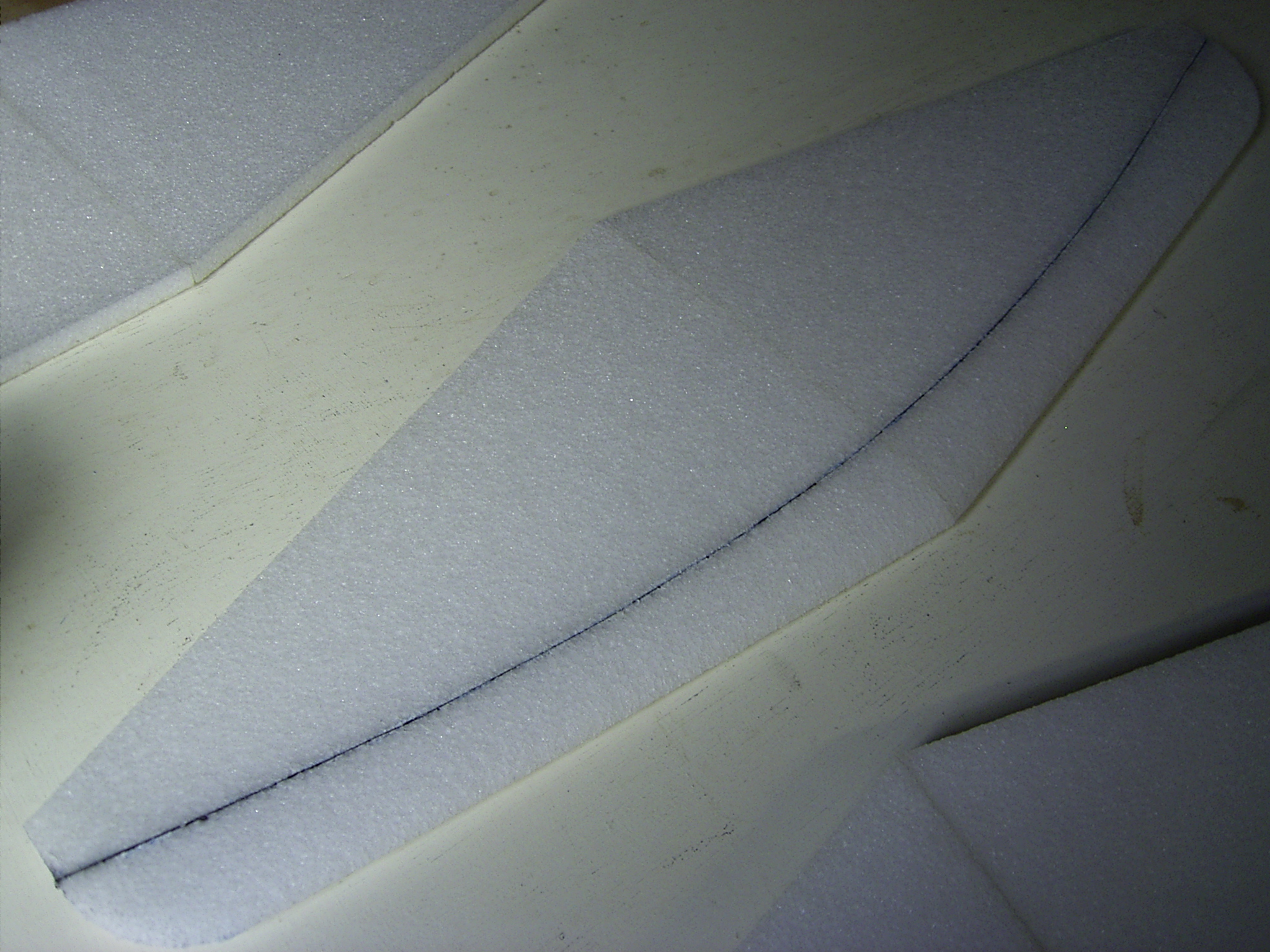
1a Now the two smaller carbon wing joiners can be fitted. Measure up 50mm from the trailing edge and cut a 3mm deep slot across the wing the length of the wing joiner, fit the spar flush with the wing surface and glue it in with CA. Repeat the process for the other side. 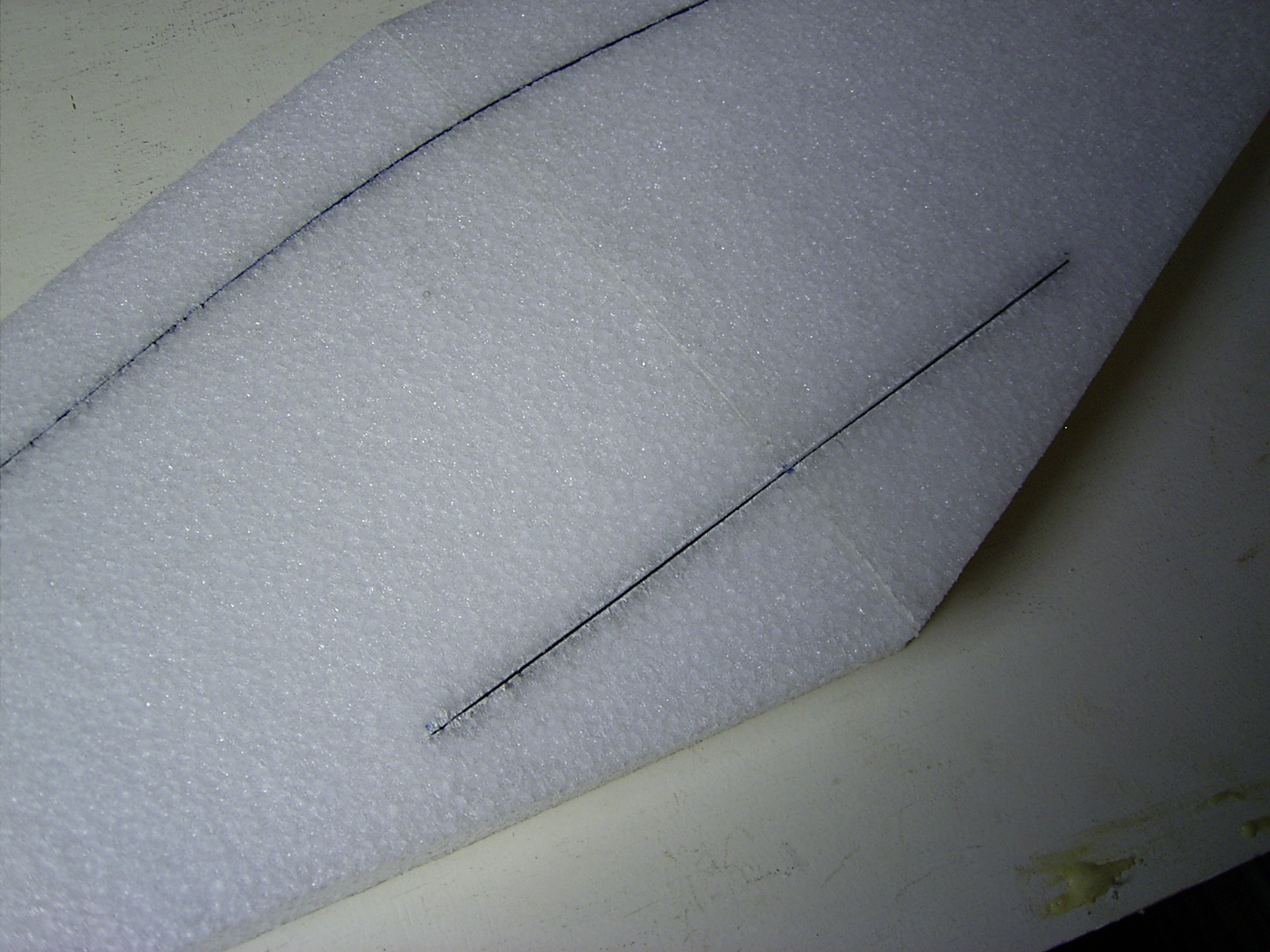

2. Slightly round the wing tips with 150 grit sand paper & smooth out any rough areas on the surface of the wings. Be extremely careful & use light pressure & don’t gouge the wing surface.
Antenna installation
1. You can imbed the antenna before or after the wing covering. You will get a neater job by doing it before the covering.
2. Mark the antenna location 5-10mm behind 1 wing leading edge, cut a 3mm deep slot along the line drawn & lay the aerial wire down in the slot ( there is NO need to glue it in)
3. You can imbed the original antenna attached to you receiver into the slot; however you will need to cut it several centimeters from the receiver. Make sure to leave enough antenna wire protruding at the root of the wing so that it will reach the receiver compartment.
4. When the pod & wing are fitted you will have to solder the aerial back together.
5. If you don’t want to fit the aerial as above you can put a small hole out the side off the pod & just tape it to the underside of the wing after the Wasp is complete.
Cutting the battery & servo holes.
1. The servos are placed on the top of the wings, these need to be outside of the pod area by approx 60mm & as far forward as you can get them, even just touching the carbon spar is fine, but remembering that the lead needs to be long enough to plug in to the receiver in the pod compartment.

2. Place your servos on the wings & mark around the servo making sure you have the horn side pointing to the wing tip, using a sharp hobby knife cut the foam slightly smaller than the servo as you want the foam to hold the servo in place with a press fit, try to get the servo flush with the top of the wing surface, its ok to cut right through the wing & then slice the block that you cut out to make a cover for the bottom of the servo.
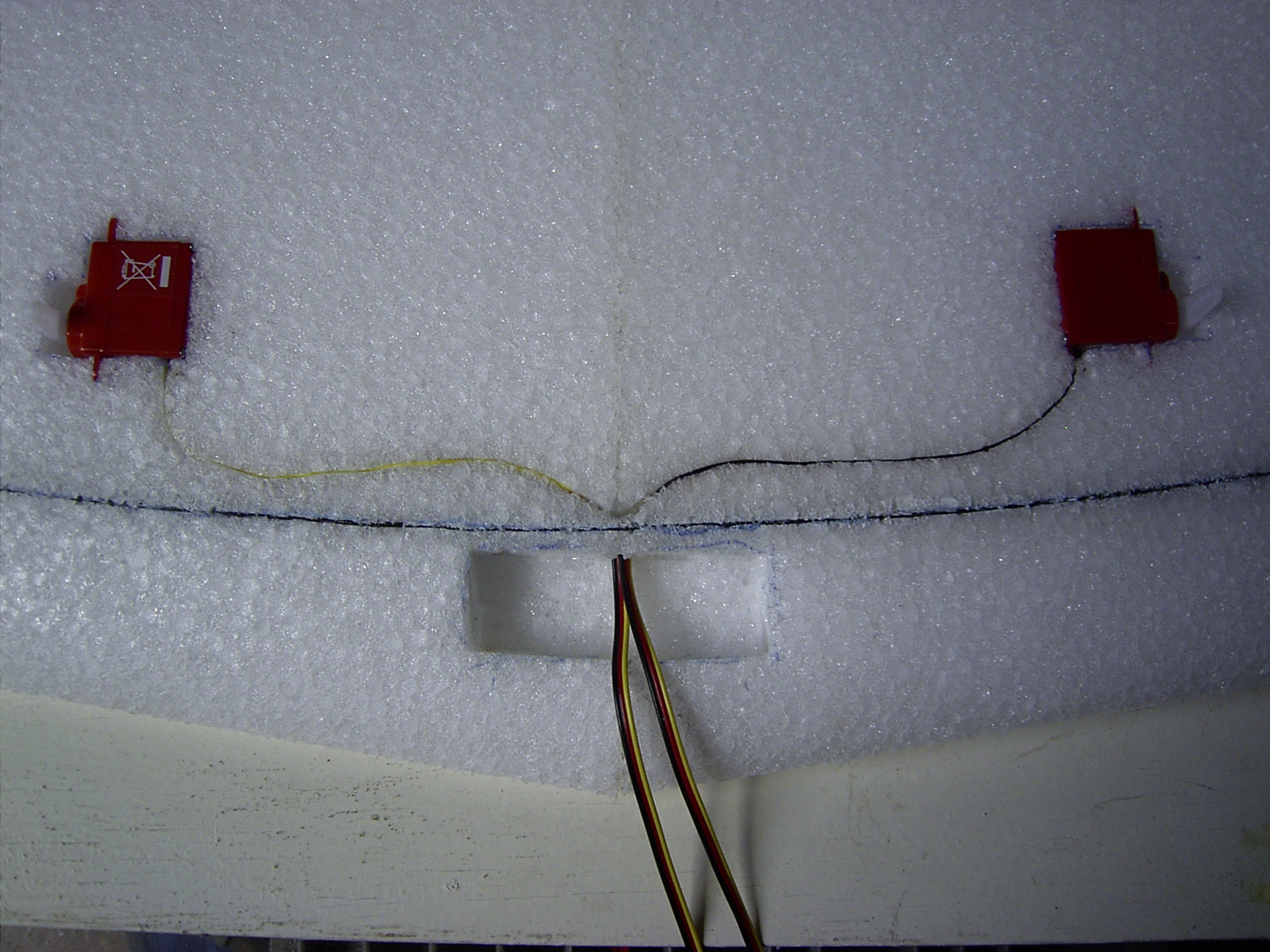
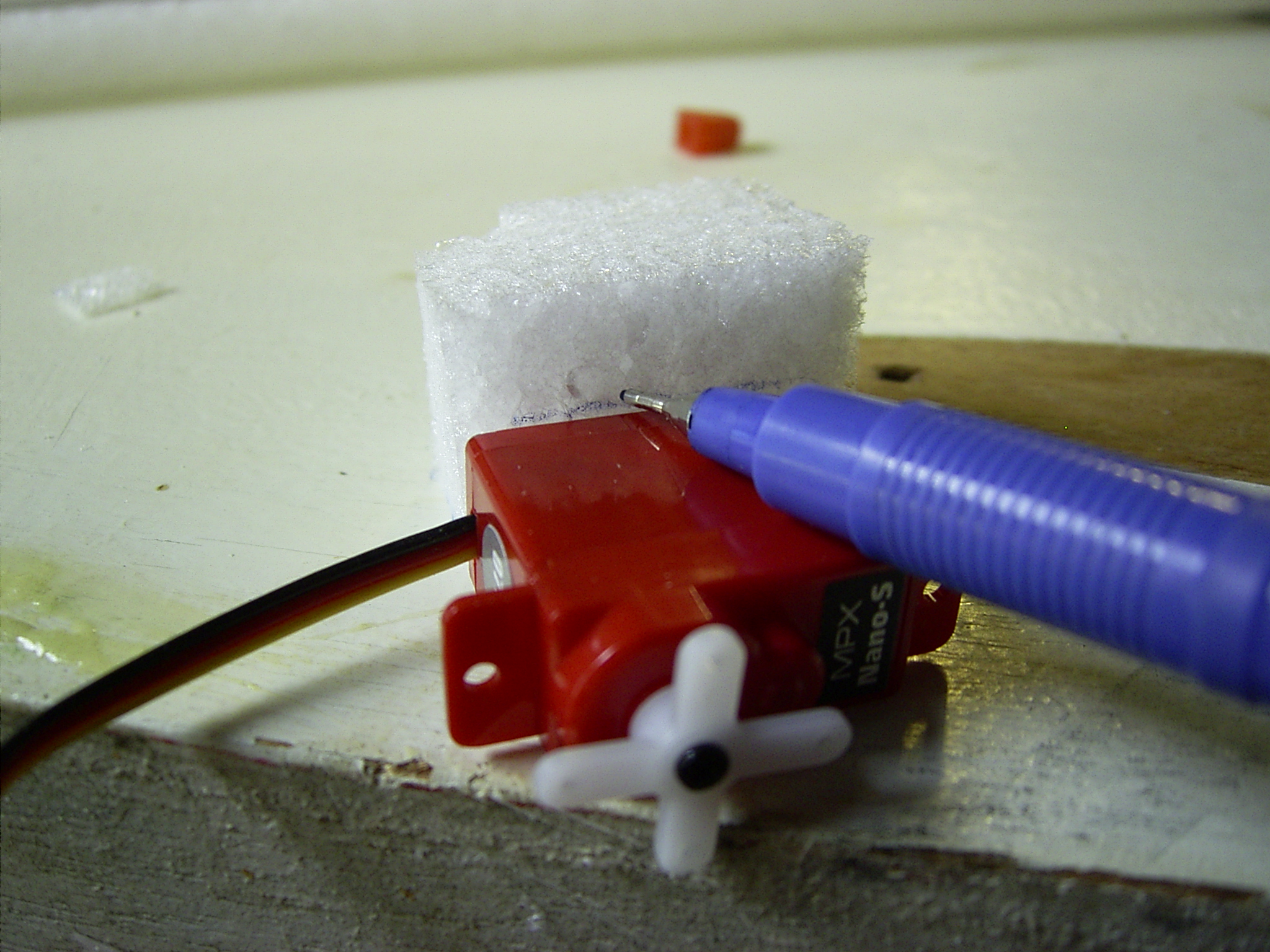
3. Connect up your receiver, battery & servos & centre the servos. The servos can now be fitted into the servo holes and a 3mm deep slot can be made from the servo to an exit hole through the wing at the root above were the receiver will be located, for the servo leads to be pushed into.
4. You will have to make the battery pack in a 2x2 fashion & fit them in the top of the wing in the pre marked area, cut the holes out with the sharp hobby blade & fit the batteries using some hot glue to hold them in place , you can use the same method to cover the batteries with some scrap foam to keep the wing clean. You will need to run the battery lead down to the pod compartment through the same hole that the servo wires went through.
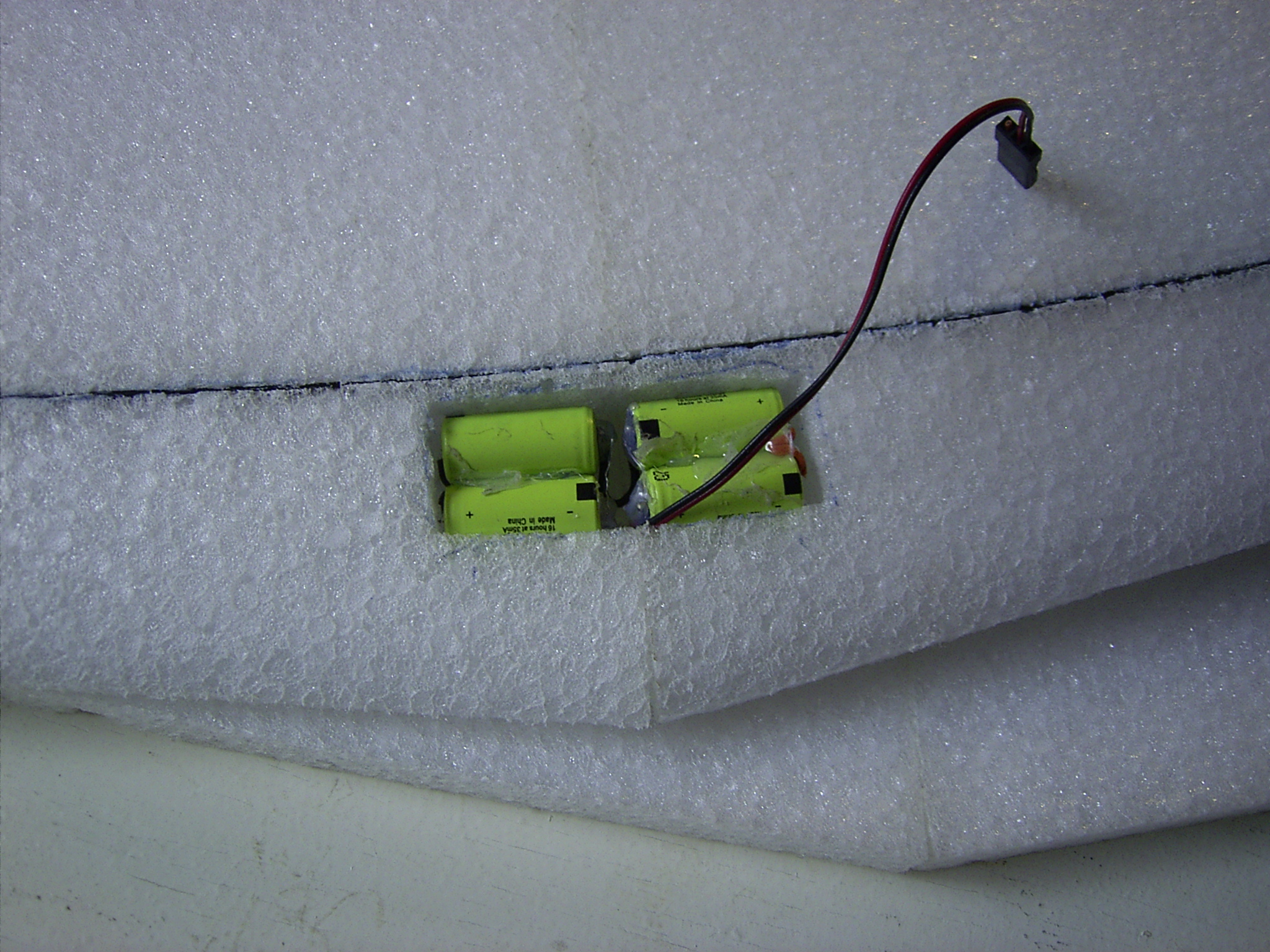
Covering wings –Packing tape method (recommended)
1. To cover the wings we recommend using light weight packing tape with a uv- resistant adhesive. The tape that you use can be coloured or clear, if clear you might like to paint the wing cores with a light coat of paint to personalize your Wasp. The paint will take some time to dry before you can proceed, if the surface is rough give it a light sand with 150 grit paper when dry.
2. First you must clean the wings with a vacuumed or blow them off with compressed air then give them a medium coating off 3m 77 spray glue on both sides & let dry till it is just tacky but does not transfer to your finger when touched. This usually takes five to ten minutes at room temperature.
3. Place some oven-bake paper down in the wing beds & place the wing on top of the bed on your work surface .Cover the bottom of wing first & start taping at the trailing edge, working forward.
4. Overlap tape by approximately 5mm. The first strip is placed overhanging the trailing edge by 15mm .The tape is gently placed over the wing and is smoothed down with the flexible plastic squeegee. The trailing edge is folded over onto the top surface. The tape overhanging the tips can be trimmed to approximately 10mm and folded over onto the top surface. You will have to pick up the wing when folding these overlaps onto the bottom surface. Take care not to cut into the foam while trimming the tape.
5. When you reach the leading edge, trim overhanging tape so that it is parallel to the leading edge & overhangs by approximately 10mm, fold this overhang around the leading edge & onto the top surface of the wing using the squeegee & light pressure.
6. To cover the top of the wings, place the covered wings in the bottom bed half’s & cover in the same sequence as the top of the wing
Iron on film (advanced)
1. You can use a low temp iron on type film (pro-film) if you prefer, you have to be very careful & use a low temp iron (hobby type )so you don’t distort the wing as you heat the film to shrink it!
2. The method I use is to cover the bottom of the wing in one peace, then cover the top also in one peace, this method gives you a very strong & clean build. Use the 3m77 spray glue, 2x light coats are better than 1 heavy coat, let the glue get very tacky before spraying the 2nd coat on & covering one side, then repeat for the 2nd side.
Shaping, covering & fitting the pod
1. The pod can be made to have a more rounded profile. Round off the lower corners & nose of the pod, the top wing saddle corners must be left square, use the 150 grit sand paper with light pressure as you don’t want to gouge the foam.
2.Trial fit the pod with out cutting out the receiver hole & check that the servo & battery wiring will be in the marked cut out, If it is OK remove the pod & cut out the receiver hole to fit your receiver & keep the foam plug as you will be using this later to make a cover for the receiver .
3. Place the pod temporarily back on the wing & lightly mark the positing of the pod out line on the wing.
4. You can now cover the pod with either packing tape or some heat shrink film; I have found that Solar- tex is the best for the pod as it will conform to the round shape the best. Give the pod a light spray with 3M-77 spray glue before covering & run some fiber strapping tape over the noise and underneath to reinforce the pod, then cover with tape or film.
5. Where you marked the wing with the pod fitted, you have to lightly sand that area & clean the area with alcohol. This ensures that the pod will adhere well to the wing when it is fitted with hot glue. You can also use some double sided tape to hold the pod on the wing if you want & just run a hot glue fillet around the pod
6. Now you are going to fit the pod to the wings. Place the pod on to the wing, using the hot glue gun place the tip of the glue gun under the pod & squeeze the glue in (you don’t need a lot of glue yet) do this in 4/6 places around the pod to hold it in place & check that the pod is in the correct place, proceeding to glue the rest of the pod in place.
7. You can clean up the fillet around the pod by using the tip of the glue gun to re-melt the glue.
Covering & fitting the control surfaces (elevons)
Check & wipe the elevons & cover top first with tape, lay the tape down with a squeegee to smooth the tape, there is no need to spray these with glue,
Attach the elevons to the wing using a top & bottom tape hinge. The elevons are mounted to the wing with the fat end at the tip and the fin end at the root. Apply the bottom tape hinge first then fit it to the wing while holding it at a 45 degrees angle up, smooth the tape down, flip the elevon on to the bottom surface & hold in position with some masking tape & apply the top hinge tape & smooth using a cloth.
Check that the elevons are free to move.
Fit out
Install the receiver into the compartment & connect up the servos & battery to re-centre the servos, measure the distance between the servo horns & mark this distance on the elevons for the placement of the control horns. The holes in the control horn must be inline with the hinge line. Drill the holes in the elevons, insert the horns and glue in place with CA. Fit the EZY-link to the middle hole in the control horn (you may have to drill the hole to fit the EZY-link)
Fit the control rod with the Z bend into the servo and the other end through the EZY-link. Set the elevon neutral position with a ruler on the bottom of the wing, the elevon should have a slight up position. Set the elevator travel to about 3mm up and 3mm down & the aileron to 15mm up and 10mm down for a start, this will do till you become familiar with the plane, after that you can increase them to suit your flying stile. The Wasp is very pitch sensitive glider, if you use a 2 channel radio with out end point adjustments it will be very difficult to control as the elevator travel will be too much.
The foam block that you cut out for the receiver hole is used to make a hatch cover; it can be taped in place as you will need to plug the battery in to the receiver to turn the Wasp on & off.
Fitting the tail
Find the center of the wing at the trailing edge and cut a 3mm wide slot all the way through the wing and the pod up to the wing joiner.
Slide the tail in the slot to check the fitment, with it set flush with the lower part of the pod it can be hot glued in place (but don’t use too much glue as it may need to come out).
The centre of gravity, or cg is located 68mm form the leading edge at the root of the wing, use a pen to mark it on both sides of the pod.
You can balance it on your finger tips, but it is better to use a pair of pointed dowels or pencil as balance points, some nose weight will be required to balance the glider. The Wasp should balance level when viewed from the side. Do not deviate from the recommended CG by more than 2mm. When fitting the noise weight cut a small hole in the underside of the pod & insert the lead then cover the hole.
Test flying
The Wasp must be balanced and trimmed properly in order for it to fly smoothly and efficiently. It may take several flights before you get the balance right. Flying wings usually requires a bit of “fine –tuning” in order to get them flying properly.
It is recommended that you test fly the Wasp on a flat grassy area before you commit yourself on a slope. Always check your radio for proper operation before flying. For the test flight you should use low rates, Give the Wasp a solid, level throw into the wind. Make any trim adjustments.
Adjust the trim switches on your radio until the Wasp flies straight and level. If the Wasp behaves unusually in pitch, then the balance is most likely incorrect. Proper balance is extremely important on flying wings. A useful method for checking the balance of your Wasp is the dive test: gain some altitude and enter a fairly steep dive and cease control input for a couple of seconds. If the Wasp quickly pulls out of the dive on its own, it is most likely nose heavy – so remove a small amount of nose weight and add a click or two of down trim. If the aircraft goes into a steeper dive and feels extremely sensitive in pitch, it is tail heavy – add a little nose weight and a click or two of up trim. The Wasp should follow straight through in a dive for maximum performance – i.e. it should not nose up or down sharply when in a dive. A properly balanced Wasp requires very little down elevator for inverted flight (remember, a glider should be flown fast during inverted flight).
Now you are ready for the slopes. Good luck and have fun!

